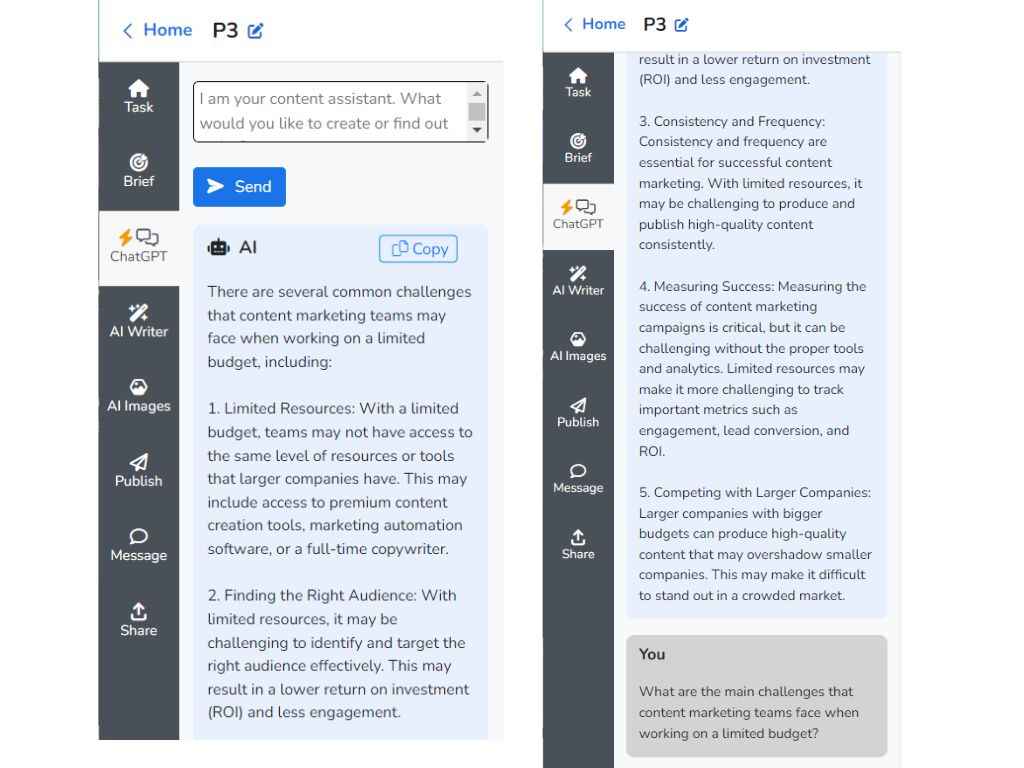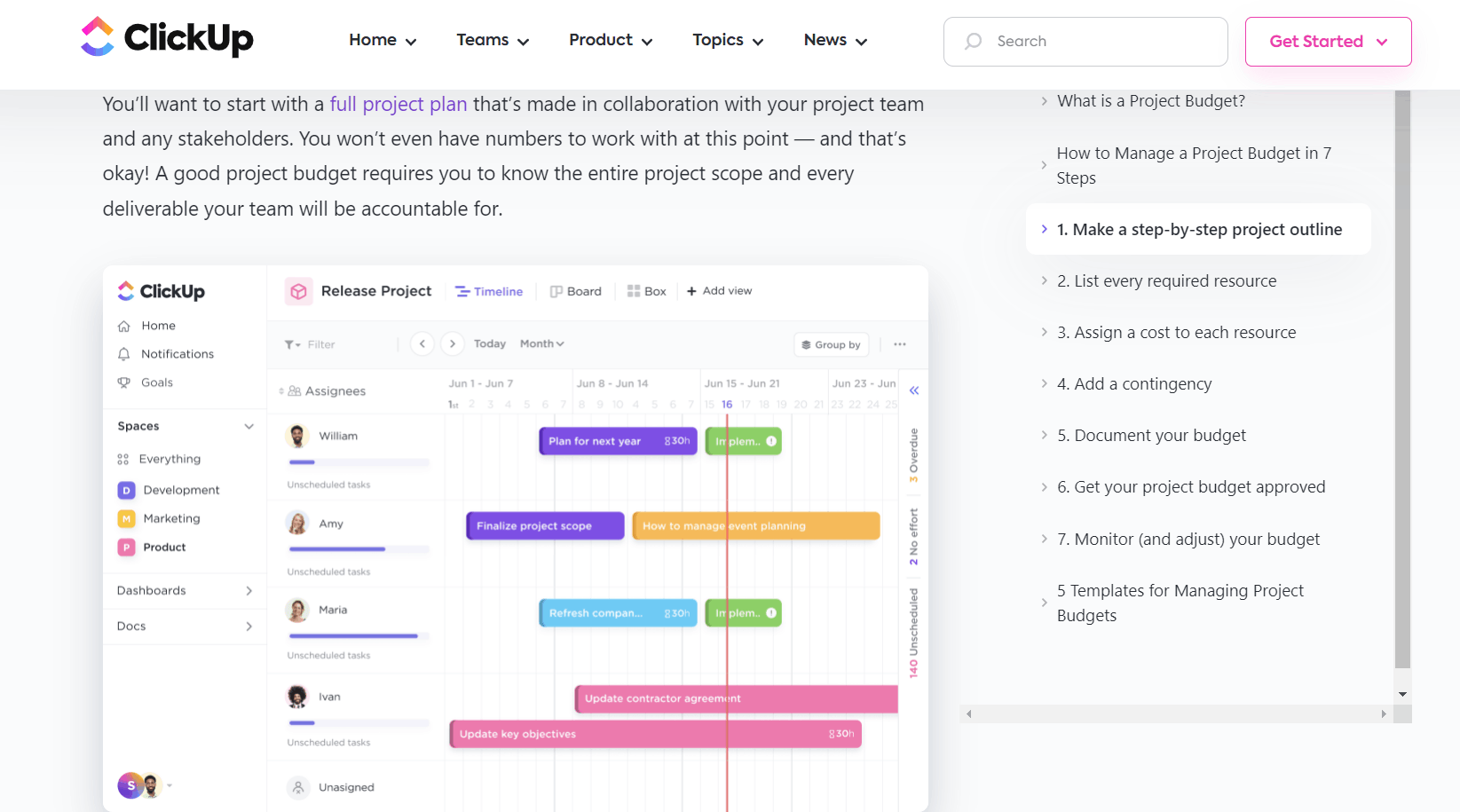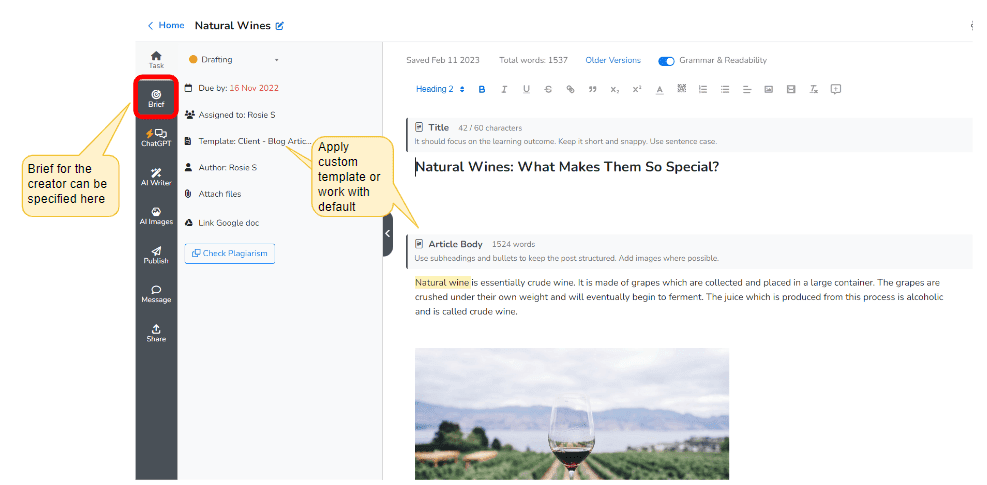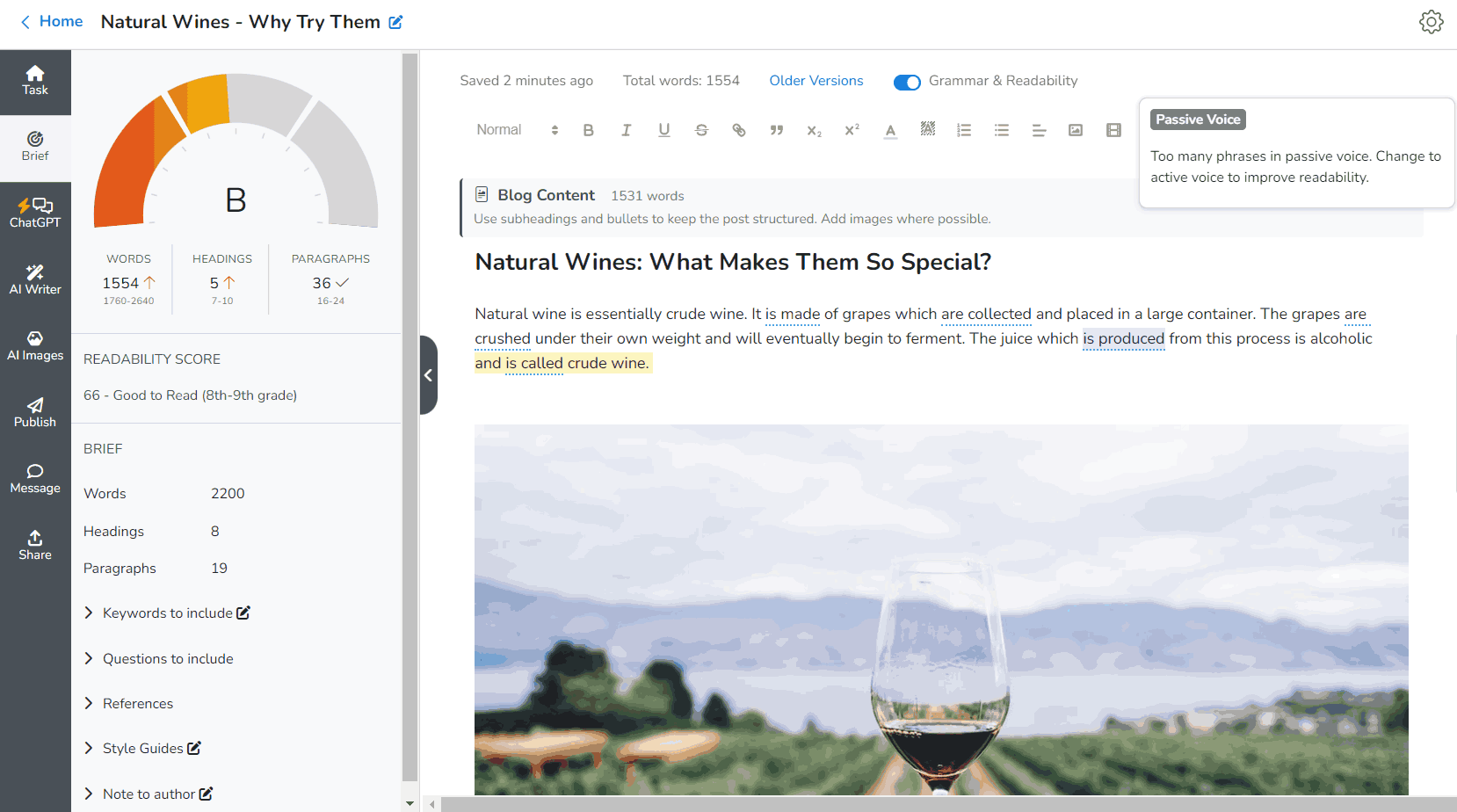If you’ve been following our blog, you know we’re always advocating marketing-led growth. No business can grow in the long run without a strong marketing strategy, more particularly a content marketing strategy. But despite knowing this to be true, the content marketing team is still viewed as a separate unit that has no interaction with other core teams like the product team. Often companies don’t even have a solid content marketing strategy in place. According to a CMI report, only 40% of B2B marketers had a documented content strategy in 2022. If you are looking to drive marketing-led growth in your business and sustain it, you have to understand how your product and your content can work together. This is where a product-led content strategy plays a central role. A product-led go-to-market strategy can be a game-changer when it comes to driving business growth.
In this article, we’re going to discuss how you can drive marketing-led growth by creating product-led content that makes your product the hero of every story you tell.
TL;DR Here’s a quick summary video of this article.
How does product-led content drive marketing-led growth?
How to create product-led content that drives marketing-led growth
- Understand your target audience and their problems
- Highlight product features that address these challenges
- Build trust through user-generated content and customer stories
- Ensure solid SEO to make your product-led content discoverable
- Test and experiment with variations in your content
- Create product-led content for all stages of the sales funnel
- Focus on educating your audience rather than selling

What is marketing-led growth?
As the name suggests, marketing-led growth is business growth driven by efficient marketing. If you have ever generated leads and converted a customer who came to you after reading one of your blog posts, watching your videos, or even from your paid ads, this is marketing-led growth. Marketing-led growth requires you to create content that will entice and engage your audience and urge them to click on your website or product link.
Thus, it goes without saying that content plays a major role in marketing-led growth. But will any content drive growth? No, it has to tick several boxes. Firstly, your content has to be valuable to the audience. If they feel you can help them solve their problems, they will be more interested in finding out how. Secondly, it should be authoritative and better than everything else that others have written on the topic. Then, it should be optimized for search to ensure that it appears in the relevant search results for people to find it.
But that’s not all. Your content should also tell people that you have the right tools to address their problems. This is where product-led content comes into the picture.
How does product-led content drive marketing-led growth?
If you’re striving for marketing-led growth, you will have to make sure that your marketing content makes people aware of what you’re offering. You could be giving out great advice and solutions to your audience. But if they don’t know that you have a product to help them implement these solutions, you end up losing prospects to your competitors. They read about it on your blog, but since there is no mention of your product in the article, they go ahead to purchase the first product they find to help them execute the idea.
With product-led content marketing, though, you don’t let them leave your website. In product-led content, the solutions that you provide are demonstrated using your product. Not only does it help the reader/viewer learn that you have the product they need, but it also helps them see for themselves how this product works.
Weaving your product into the narrative of your content is a great way to fuel marketing-led growth because you’re doing everything at once – providing value, establishing your authority, and promoting your product without blatantly selling it.
How to create product-led content that drives marketing-led growth
To drive marketing-led growth with a product-led approach to content there are a few key things you need to take care of. Though product-led growth marketing is primarily about creating awareness among the audience about your product, the content also has to be helpful and high-quality to engage the audience and get them to try the product, something that’s often easier to execute consistently with a growth agency partner supporting strategy, production, and distribution.
Here are some useful tips you should follow when creating product-led content for growth.
1. Understand your target audience and their problems
For marketing-led growth, you need your target audience to first click on that blog post or video that you’re creating. Only then will they get to know about your product and decide if they want to explore it further. To grab their attention, it is important that you address their burning problems in the title of your blog post or video. This is why the very first step in creating impactful PLG marketing content is understanding your audience and their pain points.
Tailoring your content to address their pressing needs and then showing them that you have the exact tool they need is the best way to convince prospects to take action. There are several tactics you can use to identify audience pain points. Apart from asking your existing customer base or running surveys in your target market to get an accurate picture, you can also follow your target users’ conversations and behavior. Find out what they are talking about on social media – what trending topics they are interested in, which social accounts they follow, what kind of posts they engage with, and what they discuss. Social media groups and forums are also good places to get to know your target audience.
You may also do some research on Google. Search for a query that you think your audience may be asking related to your industry and Google will give you more related questions that are being searched under the ‘People Also Ask’ and ‘Related Searches’ sections. You can also refer to the questions Narrato’s SEO content briefs provide you for a particular topic to find out which of your audience’s queries around the topic need answering.
With AI writer tools and answer engines like ChatGPT this research can be further simplified. Just tell ChatGPT what you’re looking for and who your target audience is, and it will compile a solid, comprehensive response for you from multiple sources online.
Here’s an example from Narrato’s ChatGPT integration. We asked ‘What are the main challenges that content marketing teams face when working on a limited budget?’ and the tool gave us a detailed explanation.

This combined with a little more in-depth research can give you a great headstart in trying to understand your audience’s challenges.
It is also important that the marketing team works together with the product team, sales team, customer success team, and analytics team to know what’s working and what’s not when it comes to customer satisfaction and business growth.

2. Highlight product features that address these challenges
Once you’ve found out your target customer’s pain points, the next step would be creating product-led content to address these issues and build product awareness. But what should this product-led content include? Your product may have multiple features and capabilities. So should you highlight each and every feature in all your content? The simple answer to this is NO. Good product-led content does not require you to promote all your product’s capabilities every time but rather highlight the features that are most relevant to the problem you’re addressing.
Your audience has clicked on your blog post or video thinking that they will find a solution to their specific problem instantly. If you go on talking about everything the product can do and don’t arrive at the solution to their problem quickly, they will lose interest faster than you think. This increases bounce rates and costs you conversions.
So instead of boasting about what the product can do, you need to show them how the product can help them. A customer-centric approach is key to product-led marketing.
ClickUp is one of the best examples of product-led marketing by SaaS companies. We’ve also thrown some light on this in our ClickUp content marketing case study. In this blog post on managing project budgets, for example, ClickUp only demonstrates those features and templates that a user would need for budget management. Although the SaaS product has a host of other capabilities, it does not mention them here and has other posts dedicated to other features.

If the best in the industry are following this product-led growth strategy, it certainly has an impact.
3. Build trust through user-generated content and customer stories
In all our content marketing case studies of major SaaS brands, be it the HubSpot content marketing case study or the Airtable content marketing case study, you’ve seen how customer stories are a very important element. User-generated content or customer stories of how they overcame their challenges using your product are a great way to build trust with your prospects.
Instead of you telling them why your product is the best solution for them, giving them real-world examples where others have solved similar problems using your product is much more convincing.
This is also why building solid customer relations is important for your business’s growth. Customer success teams can approach customers with goodwill for your company to help craft these case studies and user-generated content.
To gather content from your users more easily and seamlessly, you can create custom content templates on Narrato Workspace. These content templates can have different fields for rich text, plain text, images, and attachments. You can share a link to the content task with edit access with your customer and all they have to do is fill in the relevant sections. This ensures that the user-generated content you get follows your desired structure. You can also provide a content brief for contributing users to follow, so they know what your brand’s requirements are.

4. Ensure solid SEO to make your product-led content discoverable
Product-led content can only support your growth model if the right people land on your content. But how will they organically find your content in search if you don’t pay attention to SEO? Like all other content on the web, your product-led blog posts, articles, e-books, case studies, etc. also need to be optimized for search.
This involves keyword optimization, link-building strategies, paying close attention to content structure, using visuals, and more. When it comes to keyword research for your product-led marketing content you need to also include branded keywords along with the usual non-branded keywords you want to target.
Using branded keywords ensures that you also appear in highly targeted searches that prospects may carry out. Since you will be mentioning your product in the content anyway, it will be easy to accommodate these branded keywords. So whenever a prospect searches for your brand they will not find just your website but also the content you’re creating and their chances of converting could increase.
The easiest way to go about search engine optimization for your product-led content would be to generate an SEO content brief on Narrato and use the AI content assistant for structuring and other quality optimization suggestions.
Here’s an example showing the content SEO score, readability score, improvement suggestions, and SEO parameters that the content assistant on Narrato provides.

While promoting your content and product through paid ads can drive growth too, usually customers acquired organically with your SEO efforts are easier to retain. This kind of marketing-led growth is more sustainable in the long run.

5. Test and experiment with variations in your content
Variety is the spice of life, they say. And this could be true for your content marketing strategy too. Your product-led growth strategies with content marketing don’t have to be carved in stone. Feel free to change things up and experiment from time to time. If a particular type of content is not driving great results, try a different format or a different angle.
If an existing post is not working as expected, try and modify the content. This does not need to be time-consuming either. If you have a powerful AI writing assistant in your tool stack with a content improver or paraphrasing use case, like the one on Narrato, this becomes an effortless task. Just identify the paragraphs or sections you would like to improve, feed it to the content improver on the AI writing tool and let it work its magic.
You can also test multiple variations of content. AI writing tools like Narrato’s let you generate multiple versions of the same content. You can use these different versions on different channels and see which one gets more clicks on your product or website links.
6. Create product-led content for all stages of the sales funnel
In product-led content marketing, content does not just help generate leads but also helps convert and retain customers. This means there should be product-led content for every stage of a customer’s journey. For instance, a top-of-the-funnel prospect needs content that will introduce them to the product without really pushing them to purchase. They need very basic, educational content that primarily answers their questions and makes them familiar with the product.
A middle-of-the-funnel prospect may be weighing their options and content that helps them compare your product to other alternatives could help them get closer to a buying decision. At this stage, they need listicles, product comparisons, case studies, and so on.
Bottom-of-the-funnel prospects are almost on the verge of making a purchase decision so you need to provide them with all the content that can convince them to take action. This is where detailed product tours, user-generated content, video tutorials, etc. could be very useful.
We have a detailed guide on creating product-led content for TOFU, MOFU, and BOFU stages on the blog if you’d like to learn more about it.
7. Focus on educating your audience rather than selling
Lastly, but most importantly, successful marketing-led growth strategies don’t make the product the focus of their efforts – they keep the customer at the center of it all. All your product-led content should be created keeping in mind that your primary goal is to help the customer and not sell the product. When you’re trying too hard to promote the product, it shows. And the audience will not trust a brand that blatantly pushes its product in every piece of content.
Make sure that the purpose of your content is to educate the audience and wherever you mention your product, it contributes to this goal. Providing your audience with informative and educational content will keep the hooked to your blog/channel. It also establishes you as a thought leader in your niche and helps position your product as a reliable solution.
Wrapping up
Product-led content is becoming increasingly important for content marketers to stay successful in the long run. It not only helps generate awareness and interest in the product, but also strengthens the relationship between customers and the product. With the right strategy and a few creative tweaks, content marketers can unlock immense marketing-led growth potential with product-led content. If you haven’t tried it yet, now is the time to start thinking about marketing with a product-led mindset.




